Diamond Education
The 4 C'sDiamond Anatomy & Cut Quality
The three most important components of a diamond’s anatomy are diameter, table and depth. The ratio of the table to the diameter, and the depth to diameter, are prominent factors in determining a diamond’s cut grade. While understanding a diamond’s anatomy can be helpful, the diamond’s cut grade should be used as a guide when purchasing diamonds. Here we explain the different parts of a diamond to help you understand the terminology that describes a diamond’s features.
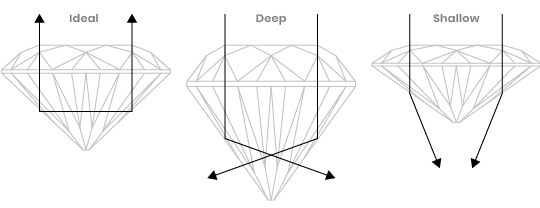
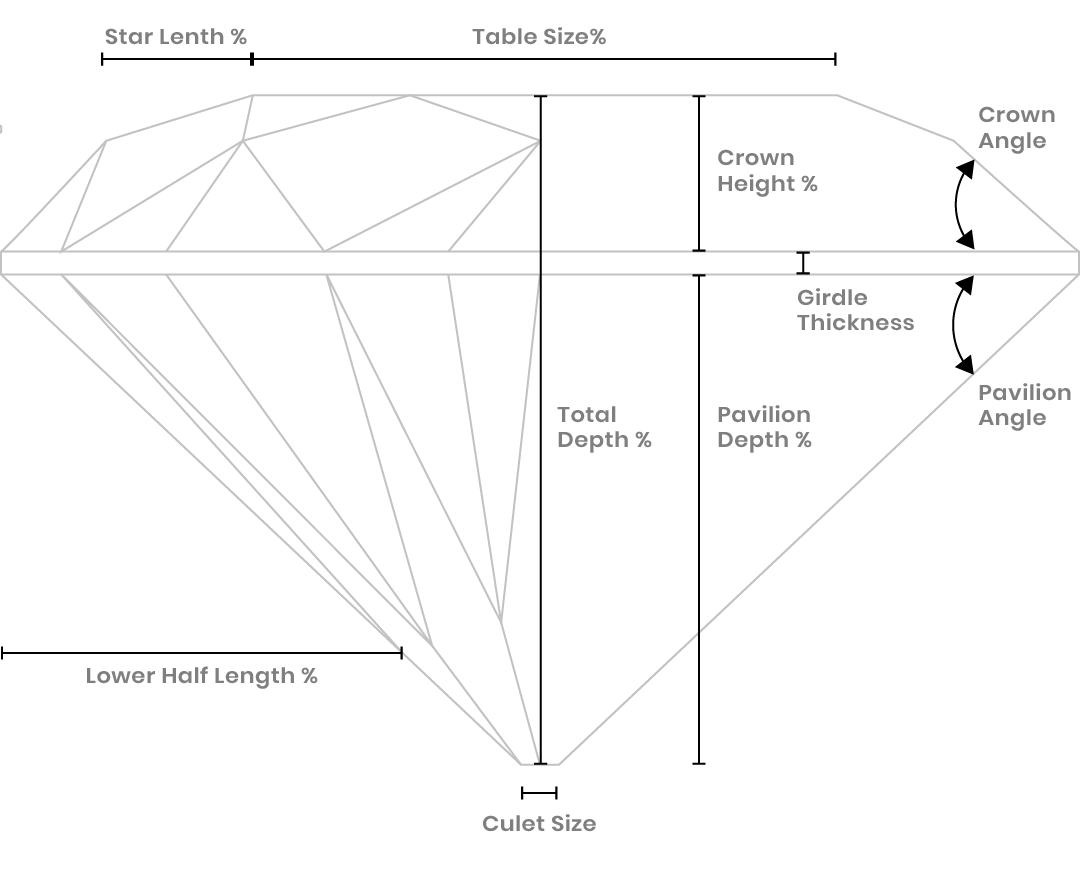
Understanding the 4 C’s of Diamonds Shopping
The characteristics that identify diamonds are known as the Four Cs: cut, colour, clarity and carat. This is a universally recognised method of diamond grading, created to standardise the classification of diamond quality, and was introduced by the Gemological Institute of America (GIA).
How do you choose the perfect diamond? There are a host of factors to consider when buying a diamond, from the type of diamond to the 4Cs—cut, colour, clarity, and carat—to the diamond’s shape, certification, and ethical diamond sourcing. Our diamond guides shed light on the art of selecting your perfect diamond.
Clarity
Diamond clarity refers to the presence or absence of internal and external imperfections, known as inclusions and blemishes, in a diamond. These natural features are formed during the diamond’s growth process and can affect its overall appearance and value. Here’s what you should know about diamond clarity:
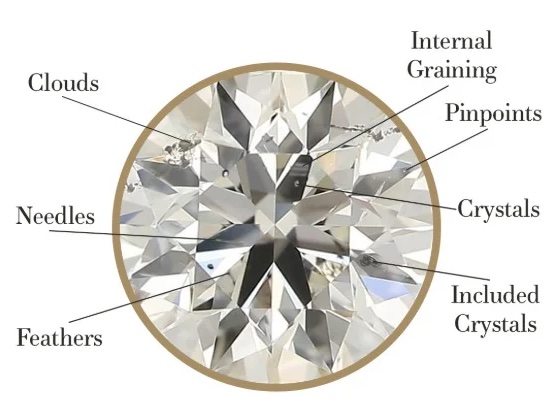


Diamond Clarity Descriptions
Clarity Grading Scale
The Gemological Institute of America (GIA) grades diamond clarity on a scale that ranges from “Flawless” (no internal or external imperfections visible under 10x magnification) to “Included” (imperfections visible to the naked eye).
The grades include: Flawless (FL), Internally Flawless (IF), Very Very Slightly Included (VVS1 and VVS2), Very Slightly Included (VS1 and VS2), Slightly Included (SI1 and SI2), and Included (I1, I2, and I3).
Inclusions and Blemishes
Inclusions are internal imperfections, such as crystals, feathers, or clouds, that are trapped within the diamond during its formation. Blemishes are external imperfections, like scratches, nicks, or polish marks, that occur after the diamond has formed. Both inclusions and blemishes can affect the diamond’s brilliance, transparency, and overall beauty.
Price Impact
Generally, diamonds with higher clarity grades command higher prices. However, the price increase might not always translate into a noticeable difference in appearance, especially when viewed without magnification.
Cut
The cut of a diamond is one of the most important factors that determine its beauty and brilliance. It refers to how well a diamond’s facets are proportioned, aligned, and finished. A well-cut diamond reflects and refracts light in such a way that it displays maximum sparkle and brilliance. Here are some key points you should know about diamond cut:
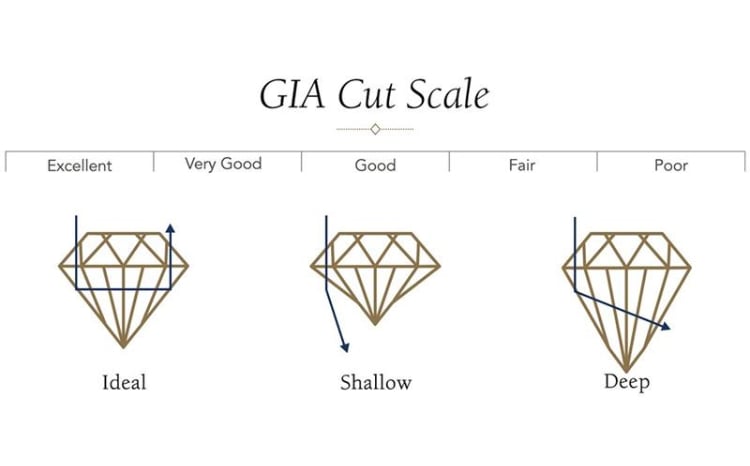


Diamond Cut Descriptions
A “triple excellent” cut refers to a round brilliant diamond that has received the highest grades in all three crucial aspects of its cut: excellent for cut, excellent for polish, and excellent for symmetry.
This designation, often seen in diamond grading reports from organisations like GIA, indicates a diamond with exceptional light performance and overall quality.
There are various diamond shapes, each with its unique characteristics. Some popular diamond shapes include:
Round Brilliant: Classic and timeless, known for its exceptional brilliance.
Princess: Square or rectangular shape with pointed corners, offering a modern look.
Emerald: Rectangular with cut corners and step-cut facets, emphasising clarity.
Cushion: Square or rectangular with rounded corners and larger facets, blending vintage and modern.
Oval: Elongated shape with rounded edges, offering elegance and brilliance.
Marquise: Elongated with pointed ends, creating an illusion of larger size.
Pear: Teardrop shape merging round and marquise cuts, versatile and unique.
Heart: Romantic shape symbolising love, featuring a distinctive heart outline.
Radiant: Square or rectangular with cut corners, balancing brilliance and trimmed corners.
Asscher: Square with step-cut facets, producing a hall of mirrors effect.
Trillion: Triangular shape, often used as side stones to complement other gems.
Baguette: Rectangular with step-cut facets, typically used as accent stones.
Color
Diamond colour is another crucial factor that affects a diamond’s appearance and value. The colour of a diamond refers to the presence or absence of colour in a white diamond. The Gemological Institute of America (GIA) grades diamond colour on a scale from D (colourless) to Z (light yellow or brown). Here’s what you should know about diamond colour:
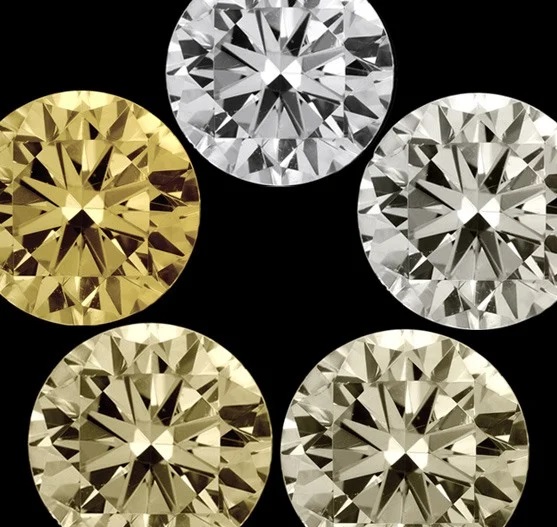


Diamond Color Descriptions
Diamonds in the “D” to “F” range are usually referred to as colourless or near-colourless and are highly prized for their purity. Those in the “G” to “J” range might have slight hints of colour, which might become more noticeable in larger diamonds or in certain lighting conditions. Diamonds beyond “J” tend to exhibit more visible colour.
Not to be confused with diamond colour when referring to white diamonds, coloured diamonds are some of the rarest gems in the world. From vivid pink to intense blue diamonds
Carat (Size)
Diamond carat is a measurement of a diamond’s weight, not its size. Here’s what you should know about diamond carat:
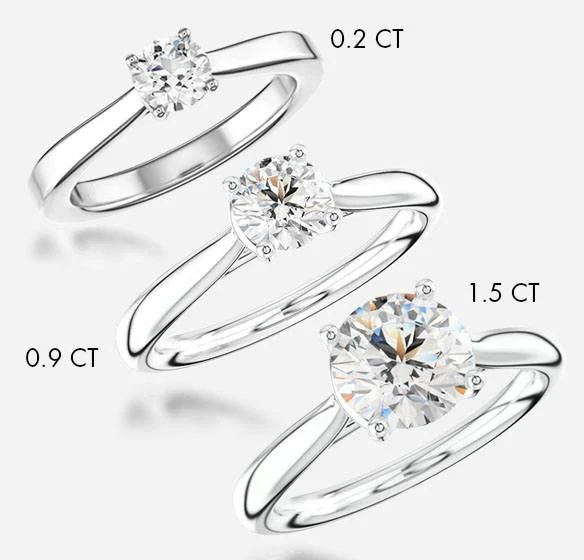


Diamond Sizing Descriptions
Carat Weight The carat is a unit of measurement for gemstones, including diamonds. One carat is equal to 200 milligrams. Carat weight is often associated with a diamond’s size, but it’s important to note that two diamonds with the same carat weight can appear differently in size due to differences in their proportions.
Carat Points Diamonds are often measured in carat points, where one carat is divided into 100 points. For example, a 0.75-carat diamond is equivalent to 75 points.
Price and Rarity Generally, larger diamonds are rarer and command higher prices per carat. This is because larger rough diamonds are less common in nature. However, prices can increase significantly for diamonds that hit “magic numbers” like 1.00 carat or 2.00 carats, due to consumer preferences.